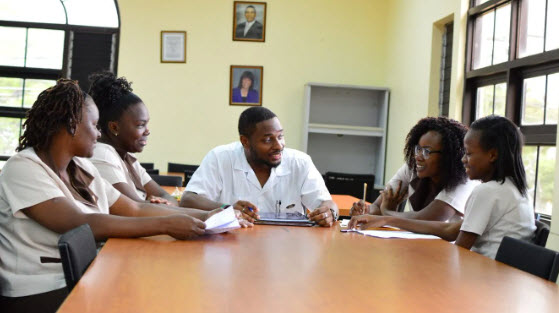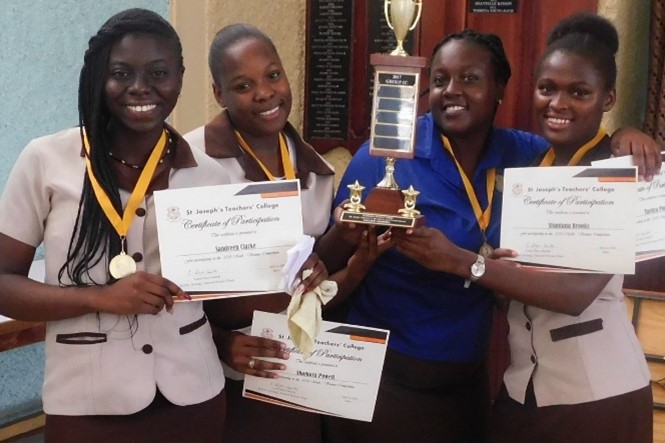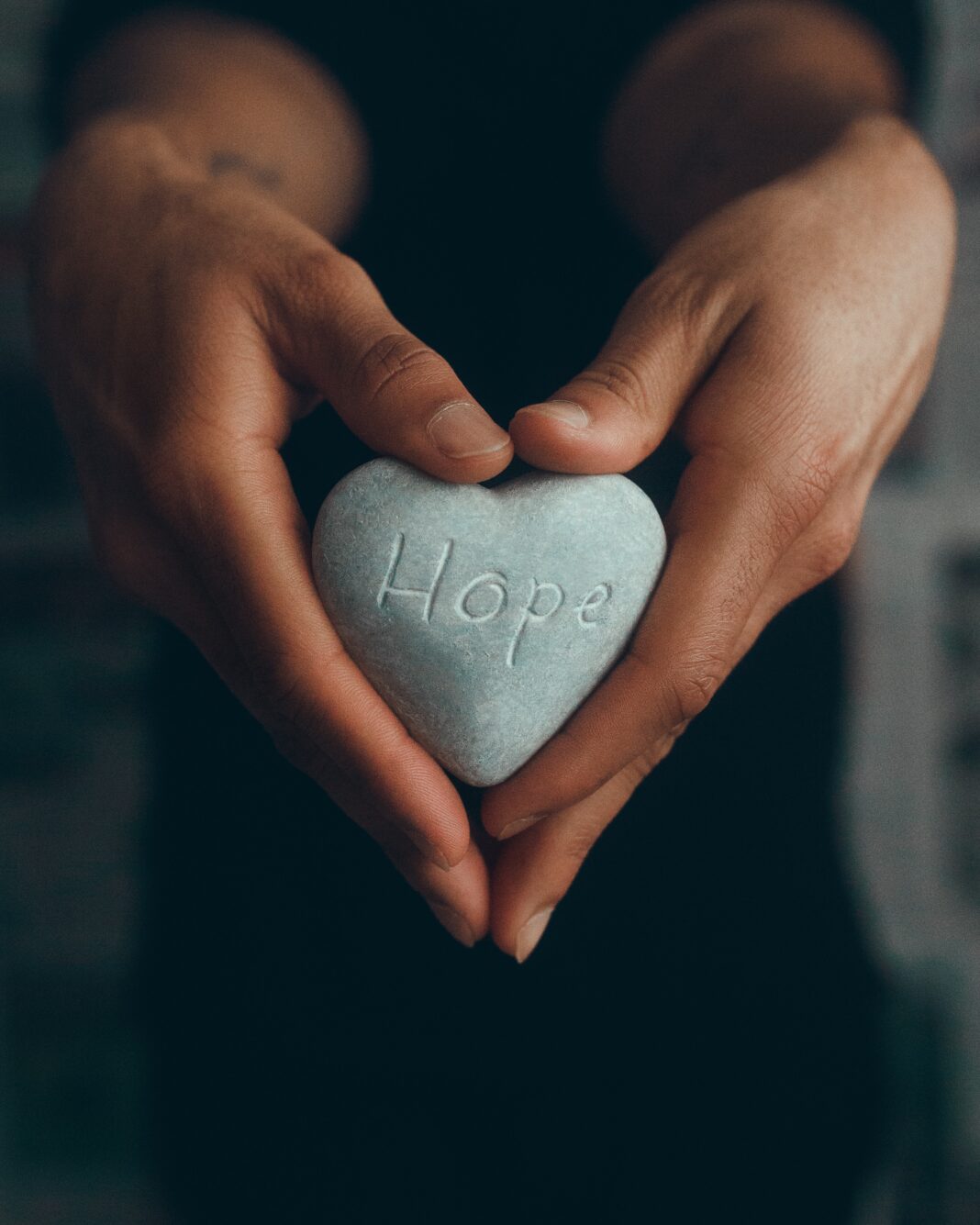“Never doubt that a small group of thoughtful, committed people can change the world. Indeed. It is the only thing that ever has.” —Margaret Mead
During my Peace Corps service some twenty years ago, I was teaching computer literacy at a teachers’ college in a dangerous part of Kingston, the capital city of Jamaica. The school was administered by a small, determined band of Franciscan nuns who also ran several other schools in the area. They were strong and hardworking and ran a tight ship, but they were kind and generous and often had a twinkle in the eye. I noticed right away the respect the students had for the sisters. They were savvy, too, and made the most of their limited funds and resources. They made sure the grounds were always kept looking beautiful. They raised money for scholarships and other programs. They successfully applied for a Peace Corps volunteer (me) as a computer literacy instructor, and they landed a grant to fund the sparkling new computer lab where I would be teaching. They did a lot of good, not just for their school but for and in their community.
One day one of the elderly sisters brought me along on an errand she had to run. I don’t recall the errand, but I will always remember the day. We drove into Trenchtown, a dangerous Kingston community, where Bob Marley had lived as a young man and wrote lyrics about. Trenchtown was run by drug lords. Their gunmen were posted every few blocks to keep rival gangs out. It was so dangerous that US Marines posted at the embassy nearby received hazard pay.
As our van rounded a street corner, a gang member with a gun suddenly walked into the middle of the road and stopped us. I tried to stay calm. He was a large man with a fierce expression. The sister seemed to know him, and she gave him a lecture about how drugs were destroying the community and urged him to get out of the business. Not making me feel any calmer, the petite sister shook her finger in his face as she scolded him. Yet he listened attentively and looked down at his shoes and seemed embarrassed. After a moment he spoke softly with her and then waved us through. I realized he respected her.
Not only did this little band of nuns manage to help the college survive; they helped it thrive—in the midst of a dangerous, desperate, poverty-ridden community. They did not accept the status quo of poorly run educational institutions. They were restless, constantly innovating, always striving to make life better for their students.

A study group at St. Joseph’s Teachers’ College.
Thanks to the courage and generosity of sisters like these, generations of students have gained a quality education. Those trained by the teachers’ college have graduated to teach classrooms of their own across Jamaica. The seeds planted by the sisters were growing and being replanted all over the island. I often wonder, how many lives have they impacted?

First-year students winning recognition at St Joseph’s Teachers’ College
Why should we care about the work of nonprofits?
Most likely, the work of a nonprofit has planted good seeds in your own life story. Nonprofits provide some of the greatest gifts to the world and take on some of its hardest problems. Nonprofits are building civil society. Our work eases hunger, conserves nature and wildlife, and fights injustice. Nonprofits advancing education help break the chains of ignorance and poverty. Recovery programs, mental health counseling, medical care and research provide healing. Arts programs lift the human spirit. There are thousands of nonprofits whose work in some way alleviates the suffering of the more than 648 million people who live below the international poverty line struggling to fulfil the most basic needs like health, education, and access to water and sanitation. Perhaps our efforts are aimed at freeing the approximately 24.9 million people in forced labor, 4.8 million of whom are in forced sexual exploitation. We know that the stakes are high.
Each of us have the potential to be givers, healers, and leaders. We simply can’t turn a blind eye to the many problems in the world. Each of us brings unique gifts, talents, and joy to the people and circumstances in our lives.
Consider how you give and serve in your daily life in countless small ways, within your family and in your work. You might offer simple everyday kindness to others. If you are a person of faith, you might contribute prayer. You might work in the for-profit world where your efforts help make products that bring people joy or improve their lives. Perhaps you volunteer at a local food bank or youth group. Perhaps you donate to nonprofits working on an issue you care about, like land conservation or addiction recovery. You might dedicate your time, energy, or financial support to a particular nonprofit’s mission because of your discomfort with “the way things are,” socially as well as personally.
Passion and good intentions aren’t enough.
But solving social problems is really hard work. Sometimes people experience burnout. Many nonprofit professionals describe feeling overworked, underfunded, and spread too thin. Some share that despite their hard work, they feel dissatisfied with lukewarm results. We need well-run nonprofit organizations and an infrastructure that equips us to meet these challenges, so we can discover what works. We must make the time to be intentional. This is easier said than done.
When I completed my Peace Corps tour of duty in Jamaica and returned to the US, I sought a career path where I could help nonprofit leaders solve problems and build effective organizations. This has been my work for the last 20 years. I love what I do and find it fulfilling and creative. I help nonprofit leaders and teams stress-test their strategies and approaches, identifying ways to assess whether their programs and experiments are working so that they can be more accountable to stakeholders and donors.
To my surprise and delight, I have had the opportunity to publish a book that shares nonprofit stories and best practices. It’s meant to be a fun and light read, for busy people involved in the great work of nonprofits and for people who care deeply about social change. The book’s stories surfaced from decades of stress-testing insights with nonprofit teams and through the lens of my own management experience, from interviews with nonprofit professionals in a variety of settings, and from my own freewheeling adventures in Jamaica working alongside those marvelous, gutsy Franciscan sisters.
Other voices of wisdom that inspired the book are the greats of business philosophy—people like Edward Deming, Peter Drucker, and Stephen Covey. Colleagues and clients look surprised when I also mention Saint Benedict, author of the 1,500-year-old rule remarkably still in use for the daily management of monasteries today.
Each of these thinkers provides guidance and wisdom for healthy, optimal workplaces (or working faith communities, in St. Benedict’s case) so that people can be their best. These thinkers share wisdom about who gets to make decisions and why, bottom-up empowerment, radical listening, humility, respect, and speaking truth to power. They don’t shy away from the realities of difficult personalities and situations, and they gently remind us to be mindful of our own egos, biases and hidden assumptions.
As I discovered examples for the book, they aligned with my on-the-ground experience that good intentions alone aren’t enough. As Margaret Mead observes in the quote mentioned earlier, we must also be thoughtful. The causes and stakeholders we care deeply about are counting on us to be our innovative best selves. So I was careful to include in the book stories of nonprofits that have struggled in unexpected ways, like Chicago’s Hull House, The Newseum, the One Laptop Per Child Initiative, and others. It is important for us to consider both scenarios, innovation success stories and lukewarm or failed efforts that teach us what not to do.
There are stories of deeply committed nonprofit founders overcoming incredible odds. For example, a student-run school in New Jersey for at-risk youth, the Southern Christian Leadership Association’s role in the Civil Rights Movement, Mayo Clinic, Habitat for Humanity, Alcoholics Anonymous, Fred Rogers’ nonprofit production company, and many others. These founders weren’t superhuman; they were normal people, like us, with foibles and flaws but also great moral conviction and determination to bring people together to make a difference, despite overwhelming obstacles. We can learn from them. It is right and good to think about the generous people who are giving their time and resources to help and heal the world. We can offer thanks for them. Their example may inspire us to think about our own role in the story of social change, no matter how big or small, planting seeds of hope.
This article first appeared in the St. Anselm’s Abbey spring 2023 newsletter, Washington, D.C.
Image credits: Photo by Ronak Valobobhai on Unsplash

